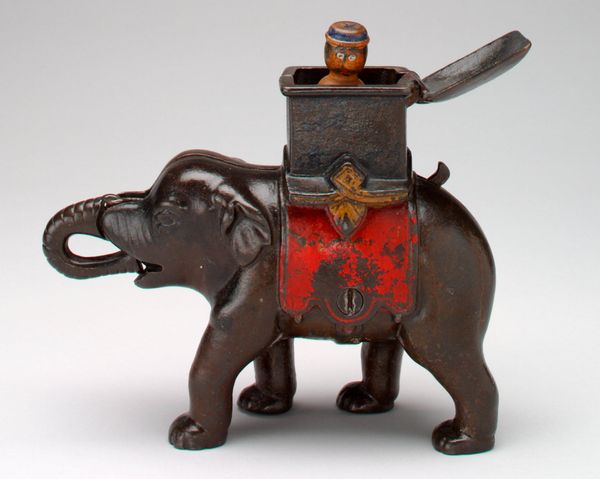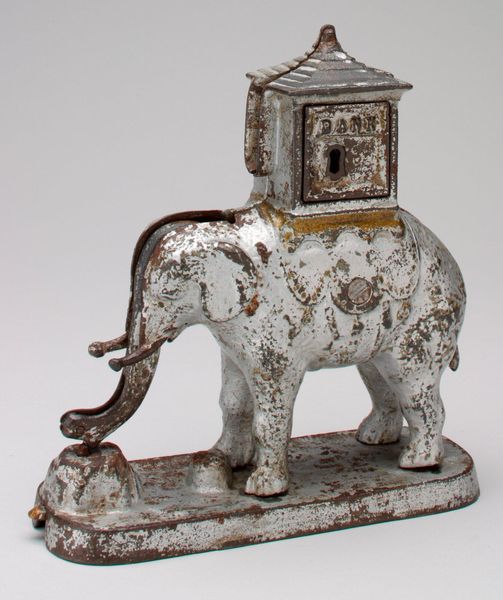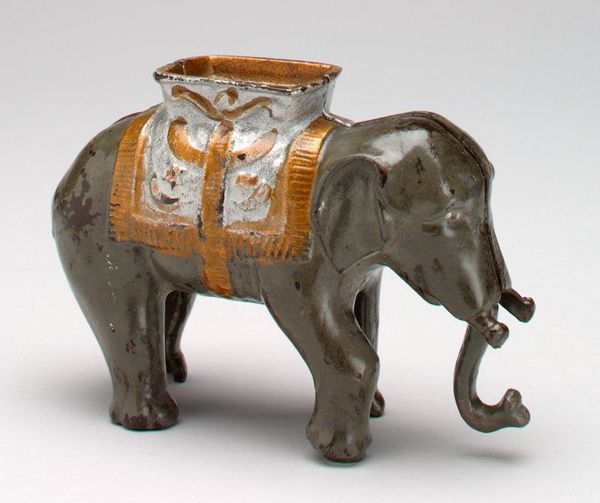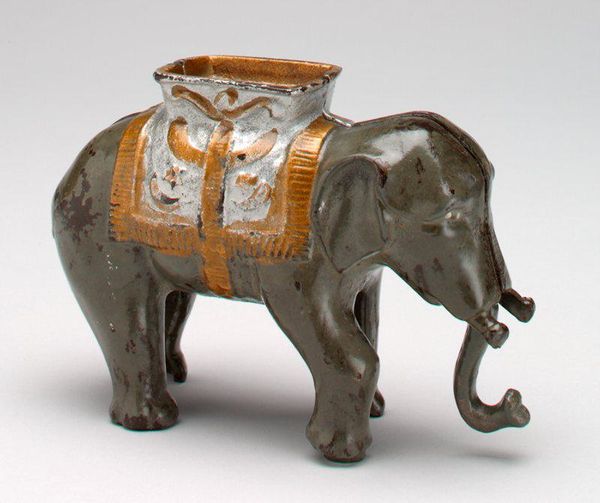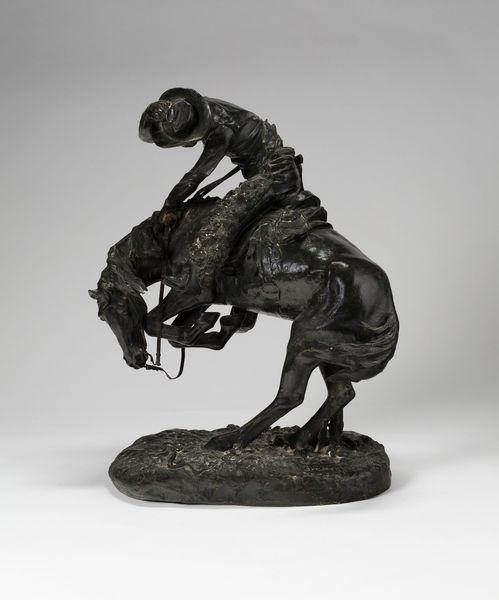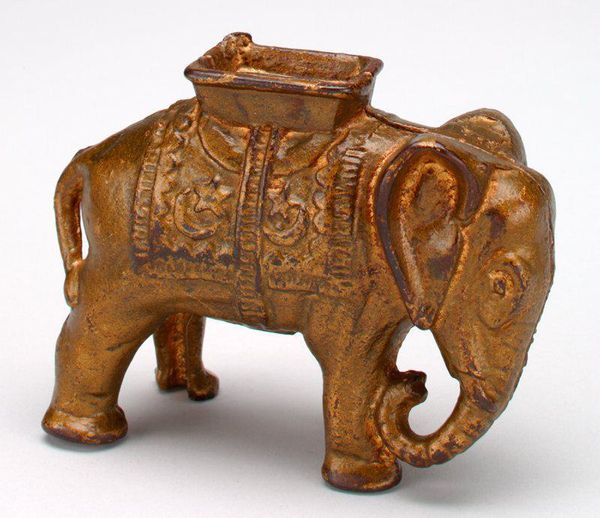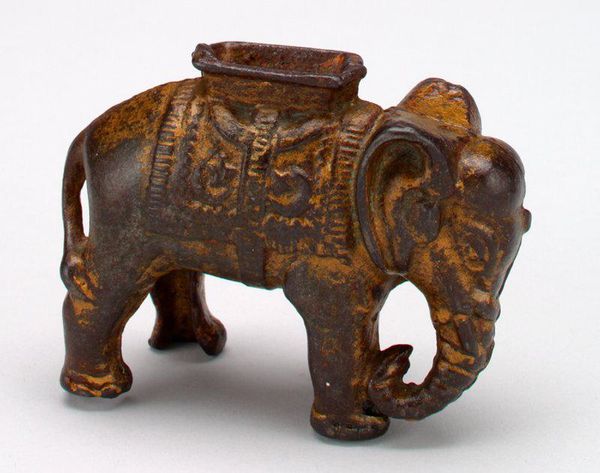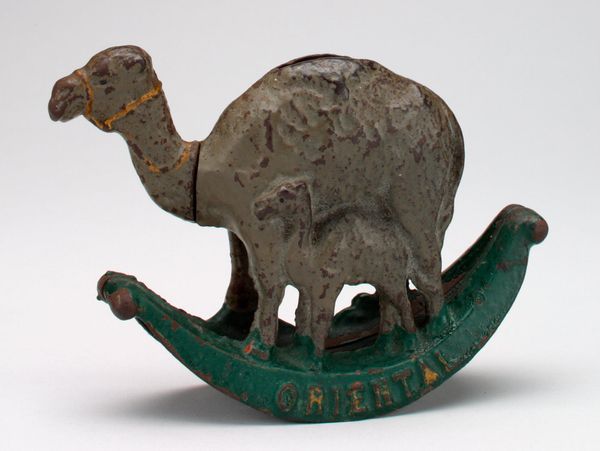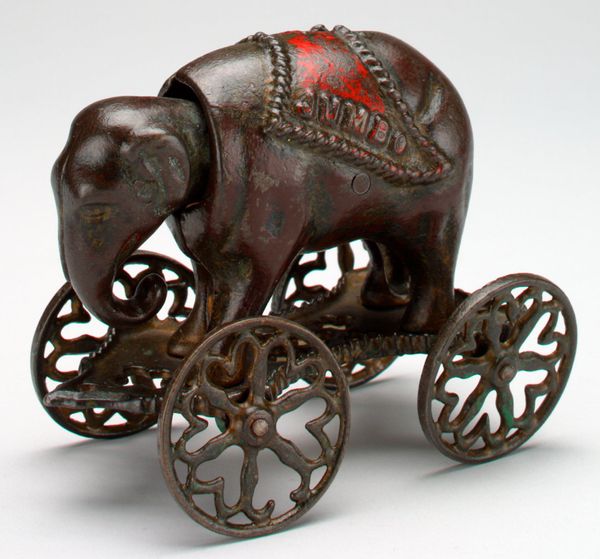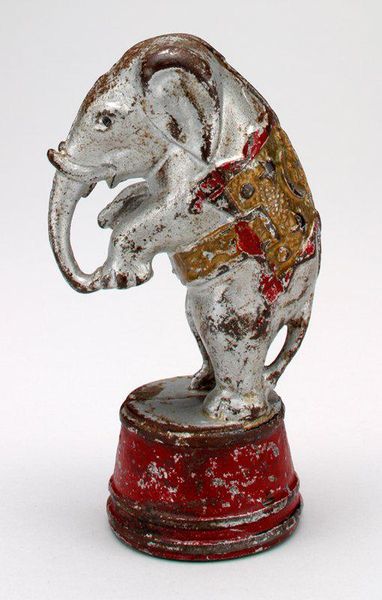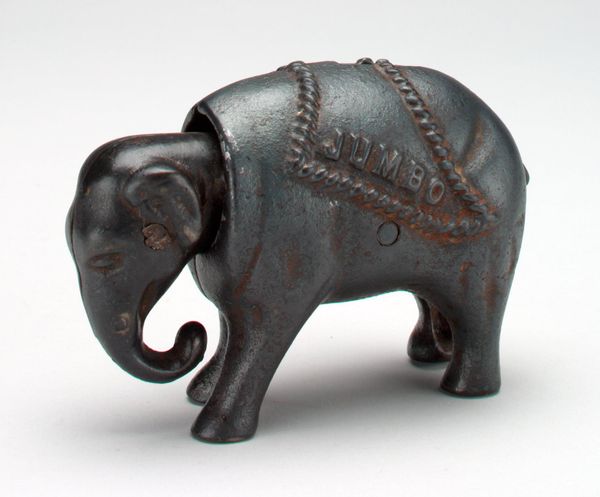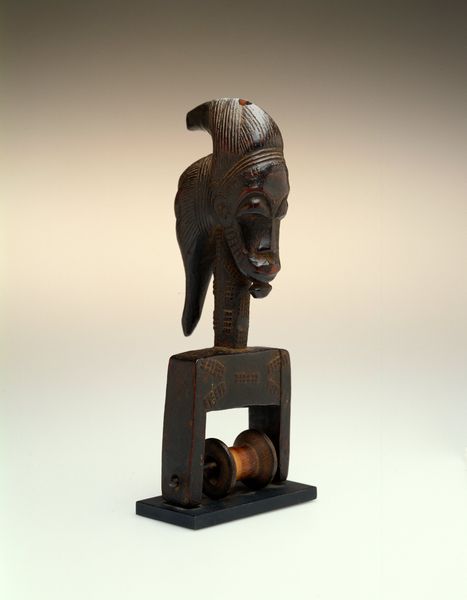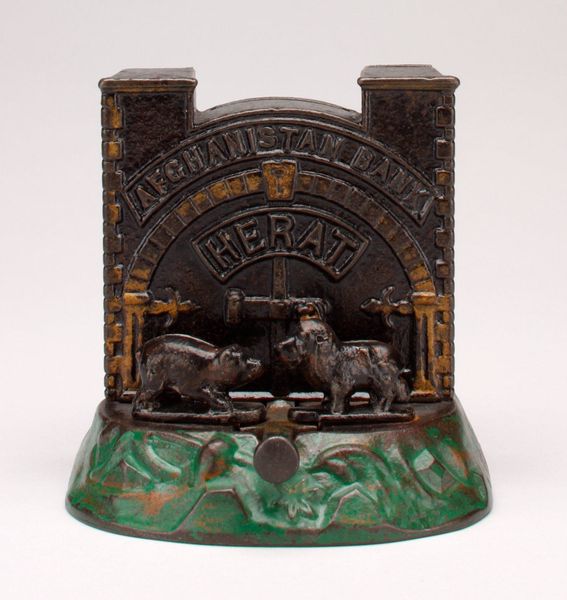
-Elephant and Three Clowns on Tub- mechanical bank c. 1882
0:00
0:00
metal, sculpture
#
metal
#
sculpture
#
figuration
#
folk-art
#
sculpture
#
united-states
#
decorative-art
Dimensions: 5 11/16 x 5 11/16 x 3 11/16 in. (14.45 x 14.45 x 9.37 cm)
Copyright: Public Domain
Curator: Here we have the captivating, "Elephant and Three Clowns on Tub - Mechanical Bank," a delightful piece from around 1882. It’s part of the Minneapolis Institute of Art's collection and was made by James H. Bowen. Editor: What strikes me first is the materiality and composition—the robust, almost playful use of metal. It's clearly representational, but stylized in such a way that highlights form above all else. There’s a definite visual tension created by the elephant's dynamic pose contrasting with the static base. Curator: It's more than just a static object, though. These mechanical banks gained popularity during a period of significant economic change. They encouraged thrift, of course, but also reflect the burgeoning consumer culture of the late 19th century and the popular fascination with circuses and entertainment. Editor: Interesting. Focusing on purely the visual, notice how the artist directs our gaze. The strong, curving line of the elephant's trunk immediately catches the eye, leading us up to the figure on its back, and down to the trio of clowns at the base. There's a cyclical rhythm embedded in that arrangement. The textures, though muted by age, show some skillful patination and layering. Curator: Exactly! These objects often served a dual purpose, entertaining while subtly instilling values. Also, consider that many of these banks were targeted at children. The playful scene acted as both decoration and didactic tool. They promoted social values through commercial goods. Editor: So, looking closely at the elephant and its ornamentation, the color choices and contrasts are quite bold—primary reds and yellows. They're deployed strategically, suggesting a hierarchical division of space—the rider atop, the elephant bearing weight, and then the supporting players at the base. Even the scale emphasizes the elephant and rider. Curator: And don’t forget that these were often mass-produced. Understanding their historical context gives insight into mass culture and design trends, and it sheds light on the broader economy of the era. They reflect societal views about labor, wealth, and entertainment. Editor: It's fascinating to see the integration of functional object and sculptural qualities; and it gives a unique perspective to the aesthetics of function. Overall, a very delightful work and one that prompts some fruitful visual analysis. Curator: Indeed, it illustrates how deeply enmeshed art is within historical and social currents.
Comments
No comments
Be the first to comment and join the conversation on the ultimate creative platform.
